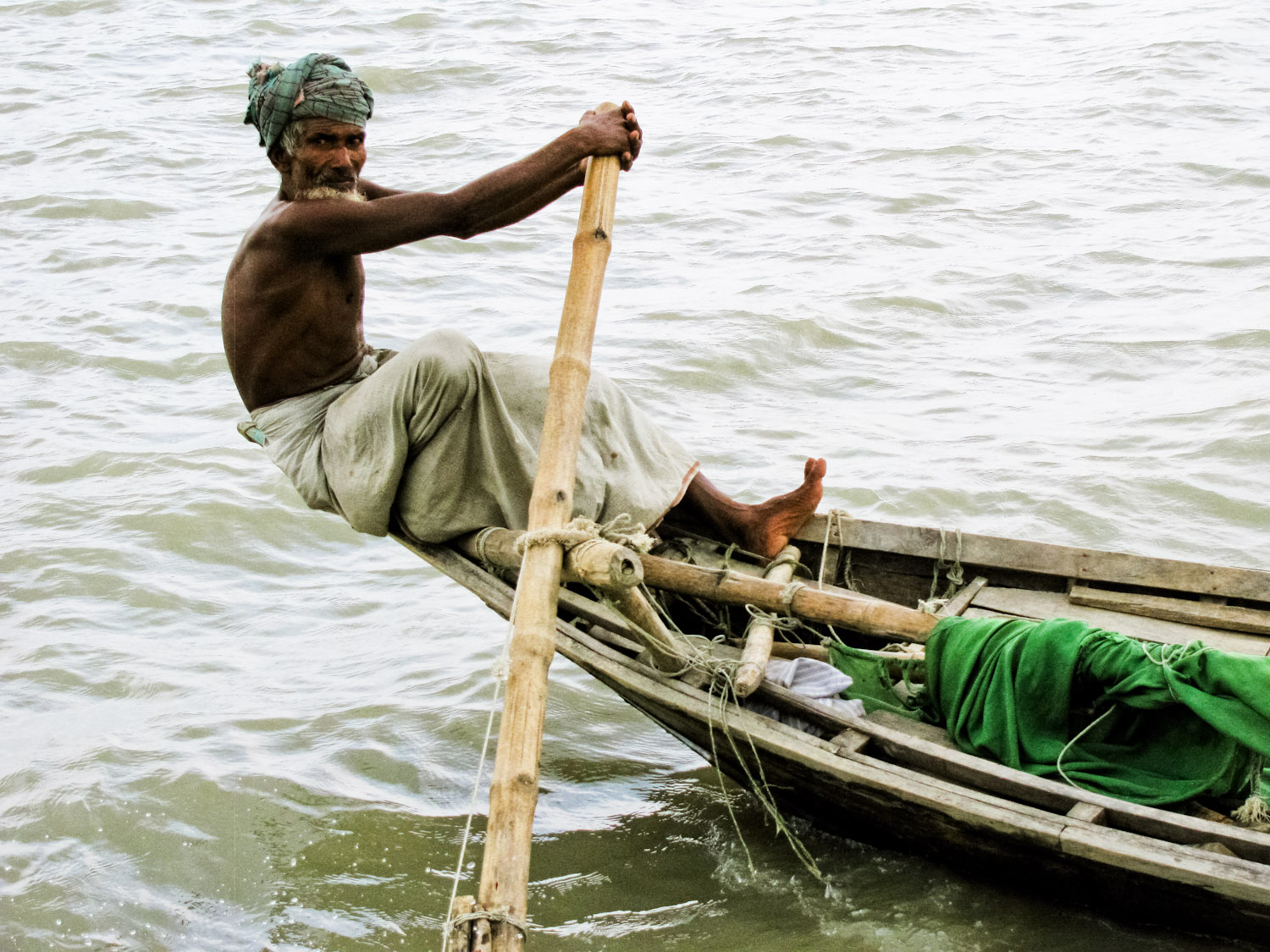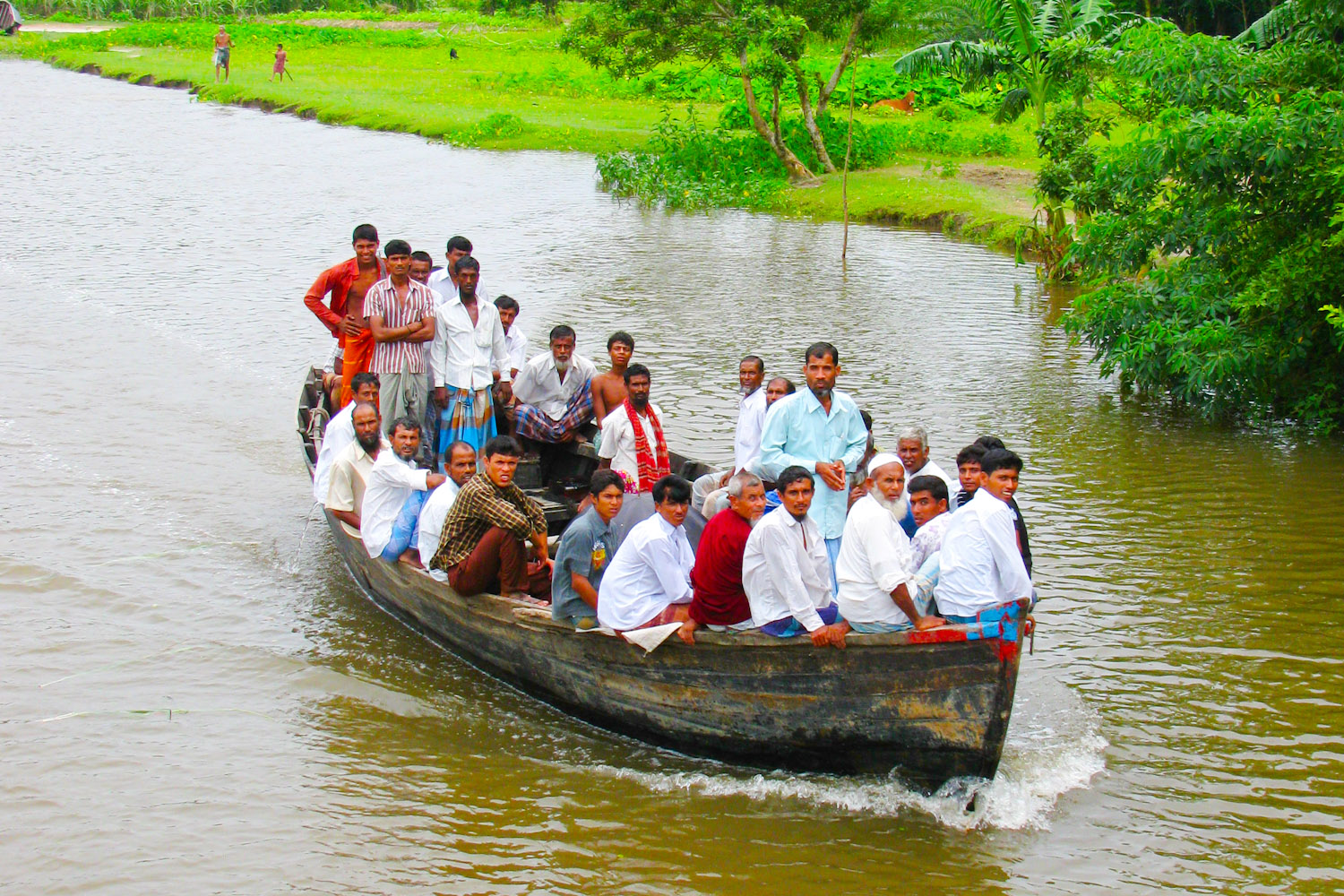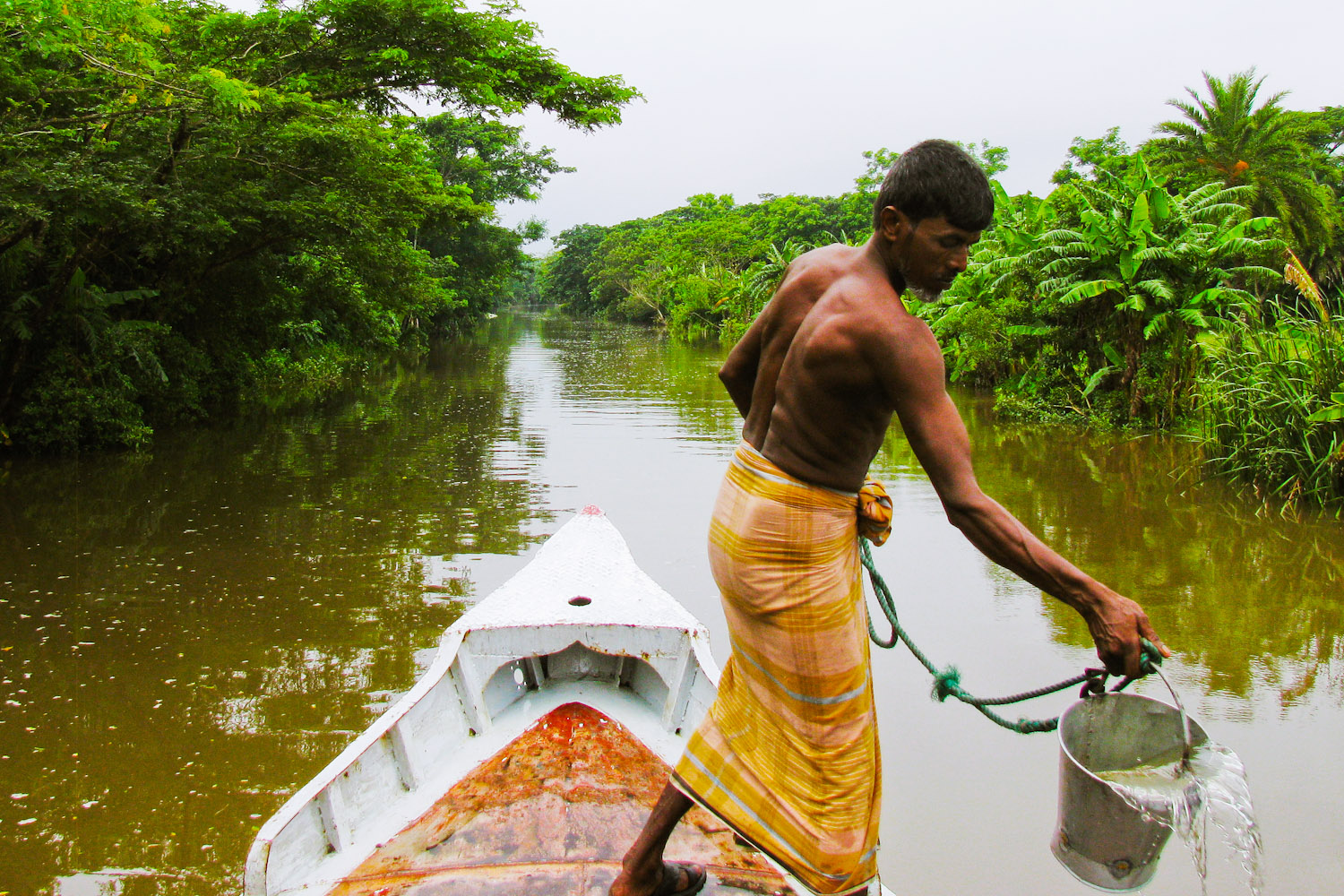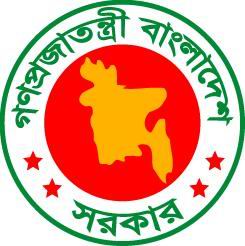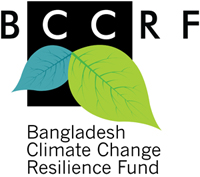Community based Adaptation to Climate Change through Coastal Afforestation in Bangladesh
Project Overview
This project, executed by Bangladesh’s Ministry of Environment and Forests (MoEF) and implemented by UNDP, has reached 18,269 households engaging citizens in afforestation, agriculture, livestock, and fishery-based livelihood adaptation and training measures. The project promotes the diversification of livelihoods and income generation, for example, through the rational use of coastal land to produce forest, fruit and fish resources.
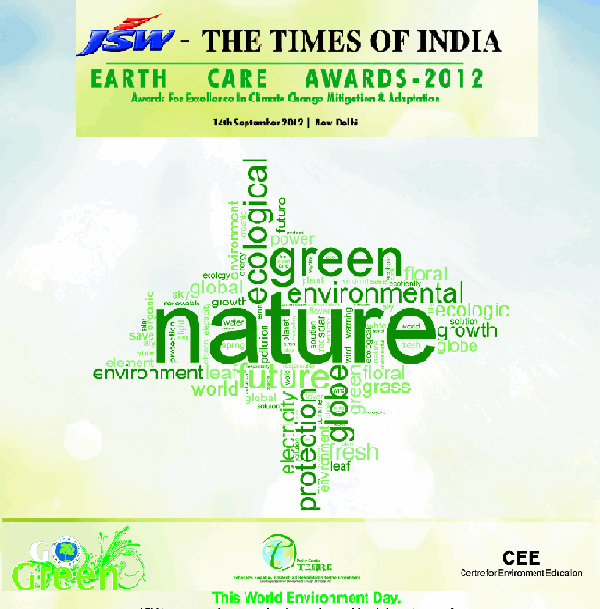 The Ministry of Environment and Forests (MoEF) of Bangladesh won the Earth Care Award 2012 (sponsored by the Times of India) for spearheading the Least Developed Countries Fund (LDCF) project “Community Based Adaptation to Climate Change through Coastal Afforestation in Bangladesh”. This year’s Earth Care Awards category was "Community-based adaptation and mitigation".
The Ministry of Environment and Forests (MoEF) of Bangladesh won the Earth Care Award 2012 (sponsored by the Times of India) for spearheading the Least Developed Countries Fund (LDCF) project “Community Based Adaptation to Climate Change through Coastal Afforestation in Bangladesh”. This year’s Earth Care Awards category was "Community-based adaptation and mitigation".
This project was also recipient of an award in the knowledge competition of the Fifth International Conference on Community Based Adaptation (CBA5), held at Dhaka, Bangledesh, from 26-31 March 2011.
One of the significant adaptation response measures used is the development of FFF (Forest-Fish-Fruit) Model, a mound-ditch model that comprises short and long term resource and income generation, as well as livelihood diversification. This model is used in barren lands, located behind coastal mangrove forests. By using a combination of protective and productive vegetation, mound and ditch land structures, the FFF model has prevented land encroachment and ensured water security through rain water harvesting in ditches. It offers multiple livelihood opportunities such as fish cultivation, irrigation for crops, and conversion of barren land into productive land. This model accommodates families in the community with at least US $1,000 additional income/beneficiary/year.
Project Details
Through alignment with a substantive forestry project that is financed by the Government of Bangladesh, this LDCF-funded project will increase the resilience and adaptive value of ongoing government investments in vulnerable areas and communities. Besides the immediate vulnerability reduction benefits this LDCF project will generate, it will leverage additional public, bilateral and multilateral investments for community-based adaptation in the context of business-as-usual forestry activities
In line with LDCF eligibility criteria and guidelines, the project will use LDCF resources to finance the additional costs of achieving resilience against climate change risks of a government-funded baseline programme, which is not yet taking climate change resilience aspects into account. The proposed project is exclusively country-driven, well coordinated with a number of other LDCF- and non-LDCF-funded projects, and will integrate climate change risk considerations into areas that are priority interventions eligible under LDCF guidelines (especially coastal development and forest management). In alignment with LDCF guidelines, the project will
- Expand the resilience of natural and social systems against climate change hazards, focusing on the community level;
- Enable the development of response strategies to reduce the adverse effects of sea level rise;
- Improve local and national awareness and understanding of the benefits of preparedness for climate change risks.
Although the project is undertaking community training activities in nursery management, it does not consider additional livelihood support and -diversification activities that could complement and sustain afforestation activities over the longer term. The persistent lack of alternative livelihood options and the pressures of poverty leave local communities with limited incentives to nurture and protect new greenbelt plantations: The ensuing effects of human and livestock encroachment result in a situation in which many afforested patches need to be repeatedly re-planted before they reach maturity to serve as protective shields.
The baseline project is therefore at risk of perpetuating this problem and doing 'more of the same': Its objective is to create and conserve coastal forests with community participation, but the lack of livelihood resilience and the pressures of poverty (which are in turn exacerbated by climate-related shocks such as seasonal flooding and tropical cyclones) create a situation in which the incentives for encroachment on new plantations keep outweighing the incentives to nurture them.
This can only be reversed if the planting of trees is coupled with targeted activities to strengthen and diversify livelihoods. If greenbelts are not perceived as an essential protective asset of rural livelihood systems, they will be used as a free economic resource that will continue to get replenished by the government. As the underlying baseline project does not make a systematic connection between forestry measures and complementary investments to sustain these new plantations through long-term community engagement, the proposed LDCF funding is clearly an additional measure to ensure that greenbelt forestry in Bangladesh can evolve from the business as usual scenario to a long-term model which generates adaptation benefits for future generations.
An additional factor that makes the aforementioned baseline project vulnerable to the effects of climate change is the continued use of monoculture practices: The BFD propagates the use of a single mangrove species (locally known as 'Keora"), which is suitable to trap sediment on newly accreted lands but keeps encountering a new set of climate change-related challenges: The temperature of coastal waters is rising (following global trends), and there is greater variability in inundation levels, inundation times, as well as salinity of soil and water. As a result, Keora plantations suffer from a higher rate of diseases and fail to regenerate naturally. Field assessments have found that at the maturity stage of 'business as usual' mangrove plantations (after 15 years), only 800 to 900 trees per hectare survive out of 4444 seedlings that had originally been planted. This represents a loss of up to 80% of planted trees and generates big gaps in greenbelt structures on moderately accreted lands, which need to be continuously re-planted.
There is an urgent necessity to fill these gaps with a more innovative mix of mangrove species that have vigorous regenerating abilities and increase the genetic diversity of these greenbelts. The proposed LDCF project will introduce a diversified set of 8-10 selected mangrove species in 4 coastal districts, in which this problem is most apparent. In doing so, LDCF resources will address an evident climate change-related problem in a baseline afforestation project: Without LDCF investments, the baseline project will not be able to sustain critical plant density per hectare, and buffer the effects of higher water temperatures, higher/longer tidal inundations, and shifting salinity levels.
At present, it is fair to say that without additional improvements in the functional design and community ownership of the above baseline project, the planting of trees in coastal belts does not qualify as a long-term adaptation and/or resilience measure. There are evident and substantive problems in establishing and sustaining new greenbelt structures as protective buffer zones from climate-induced stresses, which need to be addressed by additional activities, such as: a) Changing the mix of mangrove and non-mangrove species to increase the natural adaptive capacity of coastal forests; b) Providing economic incentives for communities to nurture, protect and conserve newly planted greenbelt structures; and c) Developing long-term benefit sharing agreements between communities and the national government for the selective logging of economic tree varieties.
Source: Bangladesh Project Identification Form (November 23, 2011)
Key Results and Outputs
- Outcome 1: Vulnerability of communities in new afforestation and reforestation sites reduced through diversified livelihood options and more effective greenbelts
- Output 1.1: Community-based adaption and livelihood diversification measures, such as integrated fish/fruit/forest-farming, diversified livestock rearing and salt tolerant/flood resistant crop farming integrated with baselines afforestation and reforestation activities in 19 districts
- Output 1.2: Diversified trial plantations of up to 10 mangrove and non-mangrove varieties are established in 4 districts to increase the adaptive capacity of greenbelt structures on newly accreted lands
- Outcome 2: Strengthened community involvement in, and ownership of, forestry-based adaptation and climate risk reduction programmes
- Output 2.1: Dialogue platforms established in all coastal districts to enable participative planning and management of climate resilient afforestation programmes between district, upazila and union officials and local communities
- Output 2.2: A forest product benefit sharing agreement between coastal communities and national government is developed and adopted in at least 5 districts
- Output 2.3: An institutional cooperation agreement and code of practice between community-based organizations and the Forest Department is developed and adopted to enable effective co-management of community-based adaption and afforestation programmes
- Outcome 3: Communal livelihood assets in afforestation and reforestation sites are protected from extreme climate events through effective early warning and preparedness planning
- Output 3.1: Effective early warning communications for extreme climate events are regularly disseminated to communities in all afforestation and reforestation sites
- Output 3.2: Communal livelihood assets in new afforestation and reforestation sites are protected from extreme climate events through dedicated disaster preparedness and risk reduction measures (such as flood-resistant agricultural plots; protection of aquaculture and freshwater supply infrastructure; safe havens for livestock)
Source: Bangladesh Project Identification Form (November 23, 2011)
Programme Meetings and Workshops
1. Coastal Afforestation project receives Earth Care award 2012.
2. Coastal Afforestation project receives Adapting to Climate Change Award 2013.
3. National Workshop on Climate Resilient Adaptation Measures and Policy Recommendations organized by CBACC-Coastal Afforestation Project.
Reports and Publications
News article
Coastal Communities in Bangladesh 'Rising from Barren Lands'
Brochures, Posters, Communications Products
Bangladesh poster: ADAPTATION IN ACTION: BANGLADESH FOREST, FISH & FRUIT
Bangladesh - Community Based Adaptation to Climate Change Through Coastal Afforestation - Project Illustration Poster
ProDocs
Relevant Peer-Reviewed Articles
Building Responsiveness to Climate Change through Community Based Adaption in Bangladesh
Case Study
PIFs
Multimedia
BBC Amrai Pari Series 2 ATN Episode 07 Fish Fruit and Forest Model 1
Our immense gratitude toward BBC and its Media Action team for featuring one of our projects, Community based Adaptation to Climate Change Through Coastal Afforestation (CBACC-CA) in their highly celebrated TV series "Amrai pari" (Yes We Can). UNDP Bangladesh has been appreciated by national and international communities all over the world for this project particularly. In global context CBACC-CA has been awarded several times for its remarkable achievements of reducing vulnerability among the coastal communities.
Coastal Green Belt at Barguna
Media Report at Ekattor Television, Bangladesh, December 2014
Rays of Hope: CBACC-Coastal Afforestation Project
Adapting to Climate Change in the Coast of Bangladesh
Bangladesh - Building Mangrove Greenbelts Vulnerable Coastline
Bangladesh's location makes it one of the most vulnerable countries in the world to environmental disasters. Its giant network of rivers and vast low-lying flood plains make it both fertile and subject to erosion from flood, drought, and storms. As a result, protective coastal greenbelts, in the form of natural vegetation, can make the difference between life and death during severe weather and increasingly frequent, and deadly, cyclones. Mangrove forests, in particular, are critical to providing this necessary defense thanks to their intricate root systems.
Monitoring and Evaluation
Project Start:
- Project Inception Workshop: will be held within the first 2 months of project start with those with assigned roles in the project organization structure, UNDP country office and where appropriate/feasible regional technical policy and programme advisors as well as other stakeholders. The Inception Workshop is crucial to building ownership for the project results and to plan the first year annual work plan.
Quarterly:
- Project Progress Reports (PPR): quarterly reports will be assembled based on the information recorded and monitored in the UNDP Enhanced Results Based Management Platform. Risk analysis will be logged and regularly updated in ATLAS.
Annually:
- Annual Project Review/Project Implementation Reports (APR/PIR): This key report is prepared to monitor progress made since project start and in particular for the previous reporting period (30 June to 1 July). The APR/PIR combines both UNDP and GEF reporting requirements.
Periodic Monitoring through Site Visits:
- UNDP CO and the UNDP RCU will conduct visits to project sites based on the agreed schedule in the project's Inception Report/Annual Work Plan to assess first hand project progress. Other members of the Project Board may also join these visits. A Field Visit Report/BTOR will be prepared by the CO and UNDP RCU and will be circulated no less than one month after the visit to the project team and Project Board members.
Mid-Term of Project Cycle:
- Mid-Term Evaluation: will determine progress being made toward the achievement of outcomes and will identify course correction if needed. It will focus on the effectiveness, efficiency and timeliness of project implementation; will highlight issues requiring decisions and actions; and will present initial lessons learned about project design, implementation and management. Findings of this review will be incorporated as recommendations for enhanced implementation during the final half of the project's term.
End of Project:
- Final Evaluation: will take place three months prior to the final Project Board meeting and will be undertaken in accordance with UNDP and GEF guidance. The final evaluation will focus on the delivery of the project's results as initially planned (and as corrected after the mid-term evaluation, if any such correction took place). The final evaluation will look at impact and sustainability of results, including the contribution to capacity development and the achievement of global environmental benefits/goals. The Terminal Evaluation should also provide recommendations for follow-up activities.
- Project Terminal Report: This comprehensive report will summarize the results achieved (objectives, outcomes, outputs), lessons learned, problems met and areas where results may not have been achieved. It will also lay out recommendations for any further steps that may need to be taken to ensure sustainability and replicability of the project's results.
Learning and Knowledge Sharing:
- Results from the project will be disseminated within and beyond the project intervention zone through existing information sharing networks and forums.
- The project will identify and participate, as relevant and appropriate, in scientific, policy-based and/or any other networks, which may be of benefit to project implementation though lessons learned. The project will identify, analyze, and share lessons learned that might be beneficial in the design and implementation of similar future projects.
- Finally, there will be a two-way flow of information between this project and other projects of a similar focus.
